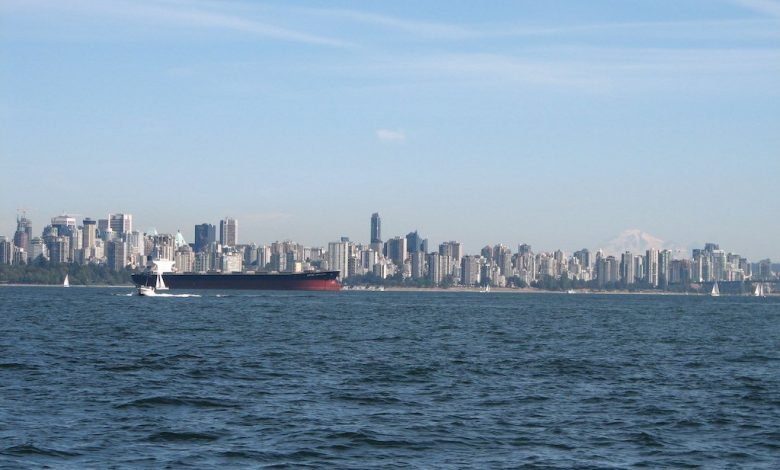Vancouver spill response raises concerns over planned pipelines

Vancouver: A day after the toxic spill in Vancouver waters came to light provincial politicians, environmental groups and concerned citizens were all echoing the same thought on Friday.
Namely, if the response to this relatively small incident is so poor how does it augur for two planned new crude export pipelines in the province and the subsequent increase in tanker traffic those pipelines would bring.
Nearly 3,000 litres of oil spilled after an anchored bulk carrier began leaking bunker fuel in English Bay, west of Vancouver’s downtown on Wednesday evening. But it was not brought to the local authorities’ attention for more than 12 hours, delaying the chance of issuing public warnings.
The response of the Canadian Coast Guard teams who tackled the spill was criticised by some politicians for taking “six hours” to contain the spilled liquid. A Coast Guard spokesman disputed that, saying they had placed the containment booms within three-and-a-half hours of realising the extent of the spill. Some politicians urged caution, saying it was premature to cast blame before the cleanup was complete.
Nevertheless, British Columbia’s Premier, Christy Clark of the Liberal Party, was perturbed enough to say: “There will not be any expansion of heavy oil movement out of this port or any other port in British Columbia until we get world-class spill response, period.”
One of the pipeline plans would see Kinder Morgan extend its Trans Mountain pipeline from the province of Alberta to Vancouver, meaning many more oil tankers in the Burrard Inlet where this incident is thought to have originated. That project, still under review, is opposed by environmental groups and a number of residents – and their position will only have hardened after Wednesday’s and Thursday’s events.
Meanwhile the cleanup effort moved from the water surface to the shoreline as almost the entire surface spill had been cleared by late on Thursday.
Western Canada Marine Response Corporation is in charge of the cleanup as directed by the Canadian Coast Guard and with help from City of Vancouver staff.
The first step of the shoreline cleanup is assessing the fragility of the marine environment to ensure the efforts would not further damage any ecosystems.
As of Friday afternoon the focus was on West Vancouver’s Sandy Cove, where a slick 80 metres long and one-metre wide had washed ashore along with seaweed and other debris. Although numerous citizens volunteered to help, the clean-up has been handled so far by trained crews in protective gear with special expertise in oil recovery.
Several oiled birds have been taken to a refuge for treatment and there were uncorroborated reports of a seal covered in oil.
It’s believed the source of the toxic bunker fuel is a grain ship, the Cyprus-flagged MV Marathassa (80,635 dwt), which was built only this year. The owners will be held to account for the clean-up bill if the ship is proven to be the source, provincial authorities said.
